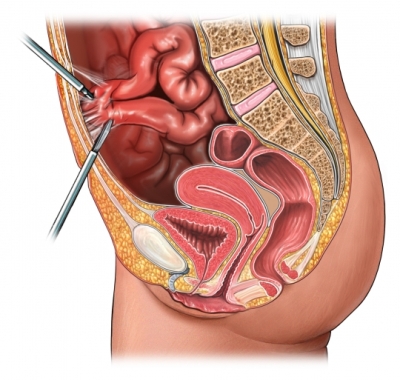Adhesiolysis
Abdominal adhesiolysis is a surgical method that eliminates abdominal adhesions. Adhesions are scar tissue lumps that grow inside the body and connect two areas of body tissue that are not ordinarily attached. Because of restricted movements, nerve pressure, or a blockage, adhesions can cause pain. Adhesions can form as a result of an infection, trauma, or another inflammatory injury. Abdominal adhesions do not always create symptoms, but they can cause chronic pain and irregular bowel movements in certain people. If you are in discomfort, a treatment known as laparoscopic adhesiolysis can be performed. The doctor will create a small incision in the abdomen and use laparoscopy to detect the adhesions during this treatment. A laparoscope is a long, narrow tube with a light and a camera within. It can be placed into an incision to assist the doctor in removing adhesions.

What are the causes of adhesions?:
Abdominal adhesions can form as a result of any type of abdominal trauma, although they are most usually a side effect of abdominal surgery. Crohn’s disease, endometriosis, diverticular disease, peritonitis, and pelvic inflammatory disease are examples of infections or illnesses that induce inflammation and lead to adhesions. Adhesions do not usually need to be treated.Mycobacterium TB affects the following genital organs in descending order of prevalence: fallopian tubes (95-100 percent), uterine endometrium (50-60 percent), ovaries (20-30 percent), cervix (5-15 percent), uterine myometrium (2.5 percent), and vagina/vulva (1 percent). Adhesions typically grow on the inner lining of the abdomen, although they can also form between organs, intestines, and Fallopian tubes.
Laparoscopic Adhesiolysis procedure
Laparoscopy is a procedure in which a tube containing a camera, light, and, in some situations, a medical device is put into the body via a very little incision. The tube’s camera is linked to the doctor’s display, allowing him to accurately investigate the interior condition. Laparoscopic adhesiolysis, often known as keyhole surgery, is a procedure in which adhesions are removed using laparoscopy and either a scalpel or an electric current. The laparoscope allows for clear and precise viewing as well as magnification of the adhesions and damaged organs. The gas (in most cases CO2) used to inflate the area allows the doctor to produce a natural spacing between organs, allowing the surgery to be performed effectively and with fewer risks.
Adhesions can also be treated with drugs, exercise, physical therapy, lifestyle modifications, and open adhesiolysis. On the one hand, drugs are insufficient to treat adhesions and are also financially burdensome, and the rest of the options may result in a frequent or rapid recurrence of adhesions. As a result, laparoscopic adhesiolysis is one of the best method.
Benefits of laparoscopic adhesiolysis
The following are some of the key benefits of choosing laparoscopic adhesiolysis:
It is the most appropriate type of surgery for treating infertility since it reduces the rate of recurrence.
Adhesiolysis Recovery Time
Most people experience abdominal pain for about two weeks, but routine activities can resume between the second and fourth weeks of recovery. It is necessary to rest, avoid physical activity, avoid particular foods, and properly care for the surgical incision. Many patients find that their pain and discomfort have disappeared once they have recovered.
Call and schedule your appointment with DR.ANSHUMALA SHUKLA at Andheri for heavy vaginal bleeding, mensuration problems, abdominal pain, and PCOS.
